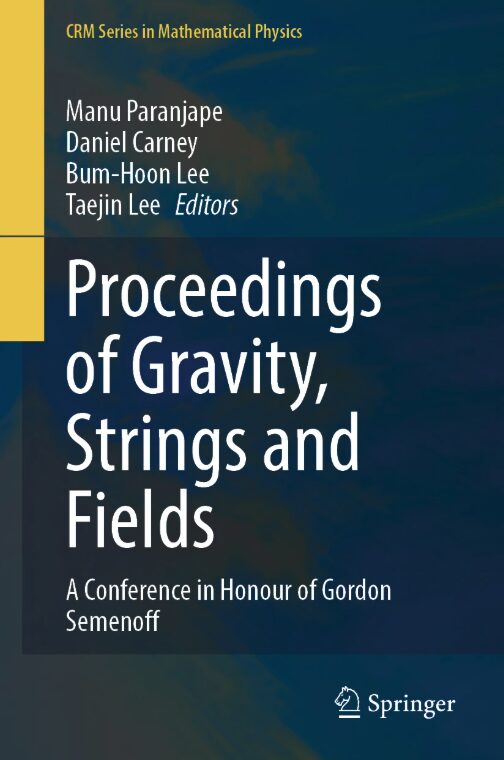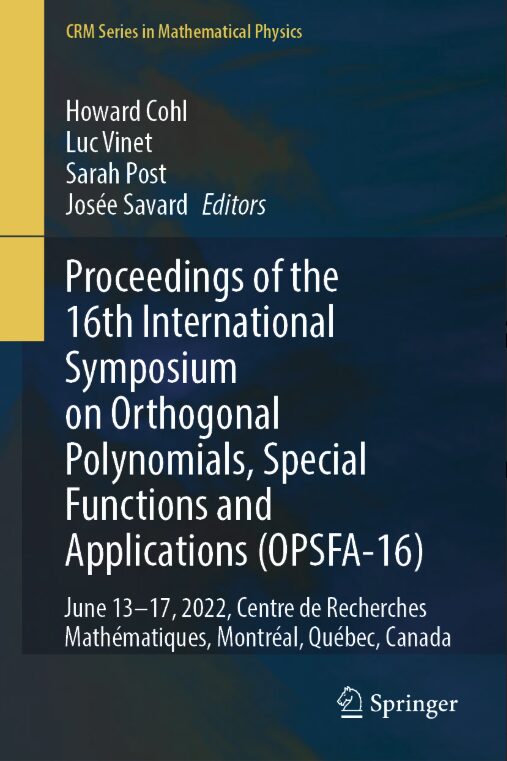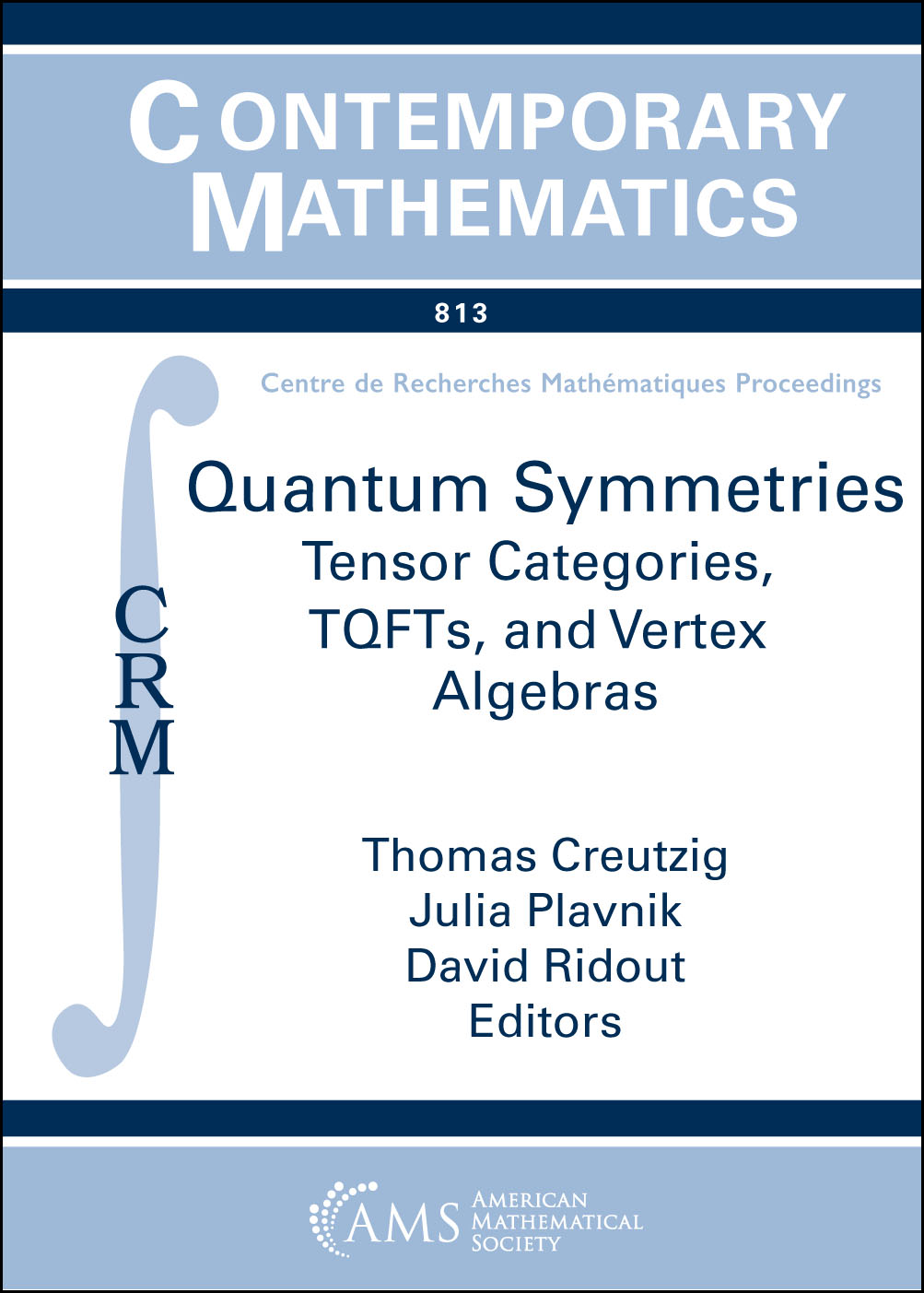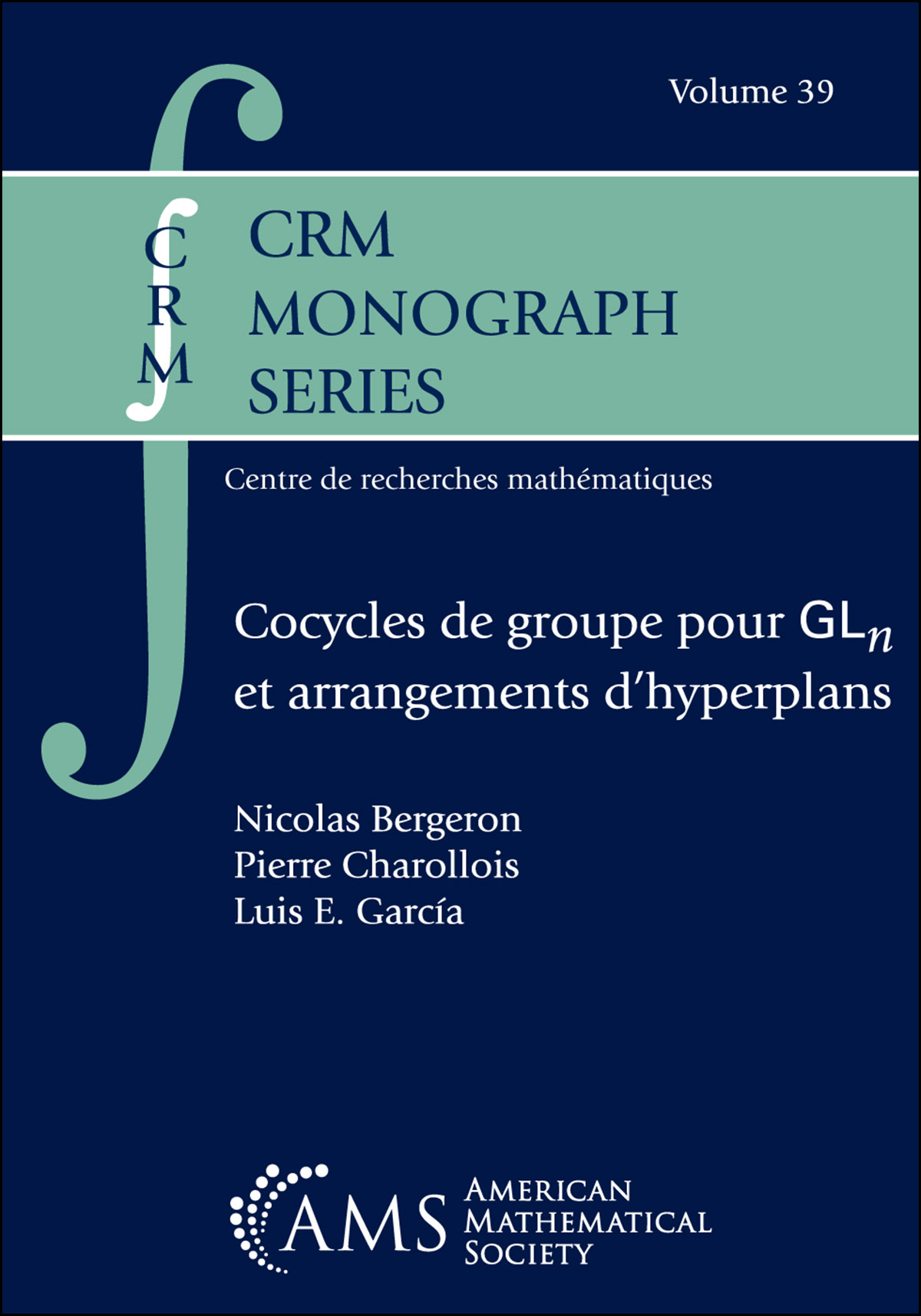Thomas Barthelmé (Queen's University)
Pseudo-Anosov flows in 3-manifolds: a plane approach
Abstract
A very powerful tool for the topological study of pseudo-Anosov flows, introduced in the 90s by Barbot and Fenley, is the induced action of the fundamental group on the orbit space of the flow. With Kathryn Mann, and different other collaborators, including Christian Bonatti, Sergio Fenley and Steven Frankel, we introduced an axiomatization of that induced action. From this point of view, the study of flows consists in using, and building up, the dictionary between dynamical/ topological properties of the flow and that of the induced action, as well as finding new algebraic/topological/dynamical properties of such class of actions.
In this talk, I will discuss some of the recent progress we obtained in this manner.
Cameron Gordon (University of Texas Austin)
Cyclic branched covers of links and the L-space Conjecture
Abstract
The three properties in the L-space Conjecture (not being an L-space, having left-orderable fundamental group, and supporting a co-orientable taut foliation) have been investigated for cyclic branched covers of several classes of knots and links. We will discuss some results in this direction and some patterns that emerge. This is joint work with Steve Boyer and Ying Hu.
Aliakbar Daemi (Washington University in St. Louis)
The knot complement problem for nullhomotopic knots
Abstract
Irving Dai (University of Texas – Austin)
Exotic disks and involutions via instanton Floer theory
Abstract
We develop a suite of instanton-theoretic invariants associated to a strongly invertible knot. We give some applications to constructing exotic disks for Whitehead doubles, stabilization questions for slice surface, and equivariant Z-sliceness. This is joint work with Abhishek Mallick and Masaki Taniguchi.
Cameron Gordon (University of Texas Austin)
Cyclic branched covers of links and the L-space Conjecture.
Abstract
The three properties in the L-space Conjecture (not being an L-space, having left-orderable fundamental group, and supporting a co-orientable taut foliation) have been investigated for cyclic branched covers of several classes of knots and links. We will discuss some results in this direction and some patterns that emerge. This is joint work with Steve Boyer and Ying Hu.
Kyle Hayden (Rutgers University – Newark)
Exotic aspherical 4-manifolds
Abstract
The Borel conjecture predicts that closed, aspherical manifolds (i.e., those with contractible universal cover) are topologically rigid: they are determined up to homeomorphism by their fundamental group. I will discuss the smooth version of this conjecture (concerning manifolds up to diffeomorphism), which is true in dimensions ≤ 3 but long known to be false in all dimensions ≥ 5. I will explain joint work with Davis, Huang, Ruberman, and Sunukjian that resolves the remaining 4-dimensional case by detecting exotic smooth structures on closed aspherical 4-manifolds.
Matthew Hedden (Michigan State University)
Floer homology and (no) Anosov flows
Abstract
I'll discuss an obstruction to a 3-manifold admitting an Anosov flow coming from (Heegaard) Floer homology and use it to produce infinite families of closed hyperbolic 3-manifolds which cannot admit such a flow. This is joint work with Jeremy Van Horn-Morris and Katherine Raoux.
Ying Hu (University of Nebraska – Omaha)
Slopes and the (relative) L-space conjecture
Abstract
Given a prime 3-manifold M, the L-space conjecture proposes a deep connection between the invariant left-orders on pi_1(M), the taut foliations on M, and its Heegaard Floer homology. In this talk, we'll focus on the case where the 3-manifolds are toroidal. We will discuss how these three properties are related through the lens of slope detection for knot manifolds: the idea that certain slopes on the torus boundary of a knot manifold can be identified through orders, foliations, or Floer homology. We conjecture that the sets of slopes detected by each of these properties coincide, and explain why this conjecture should be equivalent to the L-space conjecture for toroidal manifolds. We establish the equivalence of the two conjectures for the properties given by foliations and Heegaard Floer homology. Finally, we will discuss what is known about the sets of detected slopes for each property and highlight some open problems. This is joint work with Steve Boyer and Cameron Gordon.
Siddhi Krishna (UC Berkeley)
Taut foliations, flows, and Floer homology
Abstract
The L-space conjecture predicts that the irreducible rational homology spheres with taut foliations are exactly the 3-manifolds that are Heegaard Floer non-
L-spaces. But where do the predicted taut foliations "come from"? Must they be compatible with "natural" geometric structures on the 3-manifold? In this talk, I'll discuss forthcoming work with John Baldwin and Matt Hedden, where we address a type of geography problem for taut foliations. We show that when K is a fibered strongly quasipositive knot, large surgeries along K can never admit taut foliations which are ''compatible'' with the natural flow on the surgered manifold. This sheds light on the strengths and weaknesses of known constructions of taut foliations. No background will be assumed — all are welcome!
Francesco Lin (Columbia University)
Dirac spectral flow and Floer theory of hyperbolic three-manifolds
Abstract
An outstanding problem in three-dimensional topology is to understand the interplay between hyperbolic geometry and Floer theory, if any. In this talk I will discuss how one can completely describe the monopole Floer theory of certain torsion spin^c three-manifolds with b_1=1 in terms of data arising in hyperbolic geometry; even though these manifolds do not admit irreducible solutions to the Seiberg-Witten equations, they have non-trivial Floer homology arising from Dirac spectral flow. This is joint work with M. Lipnowski.
Thomas Massoni (MIT)
Taut foliations through a contact lens
Abstract
In the late '90s, Eliashberg and Thurston established a remarkable connection between foliations and contact structures in dimension three: any co-oriented, aspherical foliation on a closed, oriented 3-manifold can be approximated by positive/negative contact structures. Additionally, if the foliation is taut then its contact approximations are tight.
In this talk, I will present a converse result on constructing taut foliations from suitable pairs of contact structures. While taut foliations are rather rigid objects, this viewpoint reveals some degree of flexibility and offers a new perspective on the L-space conjecture.
Mike Miller (University of Vermont)
Small dg-modules, connected sums, and invariants of 3-manifolds
Abstract
I will discuss forthcoming work of myself, Daemi, and Scaduto giving a finite-dimensional formulation of the equivariant instanton complex of a rational homology spheres, and a connected sum theorem for this complex. This enables the computation of Kronheimer and Mrowka's I#(Y) for more 3-manifolds Y and leads to new homology cobordism invariants, and I will discuss several applications.
Diego Santoro (University of Vienna)
Taut foliations from knot diagrams
Abstract
Understanding when a manifold has a taut foliation has been a classical problem in 3-manifold theory, and has gained renewed interest due to its connection with the L-space conjecture. One approach to studying this conjecture involves analyzing Dehn surgeries on knots and links. Most existing techniques for constructing taut foliations on Dehn surgeries typically rely on properties of the link exterior, such as fiberedness. In this talk, I will present a different approach that uses purely diagrammatic properties of knots to ensure the existence of coorientable taut foliations on all their non-trivial surgeries. If time permits, I will also discuss further applications to specific families of knots and links.
Steven Sivek (Imperial College London)
Degree-1 maps and SL(2,C) character varieties of 3-manifolds
Abstract
A classical construction provides a degree-1 "pinch" map from the exterior of any nullhomologous knot onto a solid torus. I will review this construction and explain how it generalizes to the case where the so-called rational longitude represents a torsion class in homology, rather than the zero class. Then I will outline how it can be used to classify the rational homology 3-spheres Y, with H_1(Y) having order at most 4, for which every representation of \pi_1(Y) into SL(2,C) has abelian image. This is joint work with Sudipta Ghosh and Raphael Zentner.
Andras Stipsicz (Rényi Institute of Mathematics)
Exotic 4-manifolds with cyclic fundamental groups
Abstract
We will examine exotica for closed manifolds with cyclic
fundamental group, with special attention to definite examples,especially examples with the same rational homology as the complex projective plane (so called fake projective planes, FPP's).
Chi Cheuk Tsang (UQAM)
Heegaard Floer theory and periodic points of pseudo-Anosov maps
Abstract
Ni and Ghiggini-Spano showed that if $K$ is a fibered knot in a closed oriented 3-manifold $Y$ then the rank of the second-to-top grading of $\widehat(Y,K)$ essentially counts the number of fixed points of the monodromy of the fibering. Their proof uses ideas from the equivalence between Heegaard Floer homology and embedded contact homology. In this talk, we will explain a different approach to proving results of this flavor, based on the combinatorial machinery of veering triangulations. Our methods allow us to address periodic points with higher period, while having to restrict to pseudo-Anosov monodromy and specific framings. This is joint work with Antonio Alfieri.
Bojun Zhao (UQAM)
Degeneracy slopes and taut foliations in Dehn fillings of pseudo-Anosov mapping tori
Abstract
For a link in a 3-manifold, finding and comparing which surgery slopes yield non-L-spaces, taut foliations, or left-orderable fundamental groups is an important topic motivated by the L-space conjecture. Since taut foliations are often closely related to certain associated pseudo-Anosov flows, it is also important to understand how degeneracy slopes relate to the filling slopes where taut foliations can be constructed. In this talk, I will discuss the construction of co-orientable taut foliations in the Dehn fillings of certain pseudo-Anosov mapping tori, where the stable foliation is co-orientable but the map reverses its co-orientation, and the filling slopes are constrained by bounds coming from the degeneracy slopes. In particular, for some Floer simple knot manifolds, we can construct taut foliations in all non-L-space Dehn fillings.
Jonathan Zung (MIT)
Ziggurats and taut foliations
Abstract
If L is a link in a 3-manifold, which Dehn surgery multislopes give rise to 3-manifolds with taut foliations? In this talk, I will discuss the ziggurat phenomenon: if one restricts to foliations transverse to a fixed flow on the link complement, the set of multislopes typically has a fractal staircase shape with rational corners. In work in progress with Thomas Massoni, we explain the ziggurat phenomenon in some contexts using tools from contact geometry.





